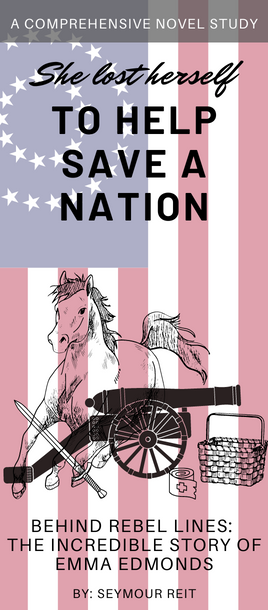 (Battles & Leaders) |
Union troopers of General John Buford's Division opened the Battle of Gettysburg against Confederate infantry of General Heth's Division on July 1st. The cavalrymen were limited by their numbers and the moderate range of the carbines they carried, but were able to deter the Confederate skirmishers for a few hours until Union infantry arrived. While the armies did battle around Gettysburg, cavalry units skirmished in Hunterstown, Pennsylvania, and on several roads east of town.
 A cavalryman and his horse. (Battles & Leaders) |
Confederate cavalrymen traveled lighter than their Union counterparts and were not usually armed with the more modern carbines. Short, muzzle-loading carbines were more common in southern regiments, including imports from England. Some Southern troopers preferred to leave their sabers behind and carried extra pistols instead of sabers, for close work. Southern arsenals attempted to mass produce breech loading carbines, even making copies of Union carbines made by the Sharps Rifle Company. Attempts at mass production of the weapon failed and southern cavalrymen relied upon a varied stock of captured and imported arms.
Cavalry regiments were composed of ten companies of 100 to 110 troopers each. There were five squadrons in a regiment, a squadron being a combination of two companies. This was later changed and the regiments were divided into three battalions. Cavalrymen could fight either mounted or on foot in a staggered skirmish line. Fighting on foot did eliminate some of the unit's firepower as one soldier was designated as a holder for four horses, including his own, while the other three troopers were detailed to the firing line.
The Army of the Potomac's Cavalry Corps, commanded by General Alfred Pleasonton, was made up of three divisions and included two brigades of Horse Artillery- batteries with enough horses for drivers and gunners alike. Each division had two to three brigades which either acted in concert with the remainder of the corps or acted as scouts and escorts when the army was on the move such as during the Gettysburg Campaign.
The cavalry of the Army of Northern Virginia, commanded by General J.E.B. Stuart, was organized into one large division, divided into brigades, and accompanied by six batteries of horse artillery. General Stuart was legendary amongst cavalry leaders for his daring exploits and raids around the slower moving Union forces. Southern writers composed songs and poems about his exploits. The morale of his troopers was very high and they fancied themselves as superior horsemen. One even boasted that twenty northern horsemen were no match for a single Confederate cavalryman. But Stuart's men were thwarted at Gettysburg by determined Union cavalry regiments which were better armed and led by experienced officers who had learned some of their tactics from the foe. Cavalry not only opened the battle, but closed it in a fierce contest east of Gettysburg. In a decisive showdown on July 3rd, Union General David Gregg's Cavalry Division thwarted a drive on the Union right flank by General J.E.B. Stuart's Cavalry. The battle was fought dismounted until a last desperate charge to break through the Union positions was beaten back by General Custer's Michigan Brigade. From Gettysburg on, cavalry would never be the same.
READ MORE ABOUT IT!
Edward G. Longacre, The Cavalry At Gettysburg, Fairleigh Dickinson University Press, Rutherford, 1986.
John S. Mosby, Stuart's Cavalry in the Gettysburg Campaign, Moffat, Yard & Company, New York, 1908.
David F. Riggs, East of Gettysburg, Custer vs. Stuart, Old Army Press, F. Collins, CO, 1970
Mark Nesbitt, 35 Days To Gettysburg, The Campaign Diaries of Two American Enemies, Stackpole Books, Harrisburg, PA, 1992.
Robert F. O'Neill, Jr., The Cavalry Battles of Aldie, Middleburg, & Upperville- Small But Important Riots, June 10-27, 1863, H.E. Howard Inc., Lynchburg, VA, 1993.
Heros von Borcke, The Great Cavalry Battle of Brandy Station, Palaemon Press Ltd., Winston-Salem, NC, 1976.
National Park Service
Gettysburg National Military Park
97 Taneytown Road
Gettysburg, PA 17325
author: John Heiser
Gettysburg National Military Park
May 1998


